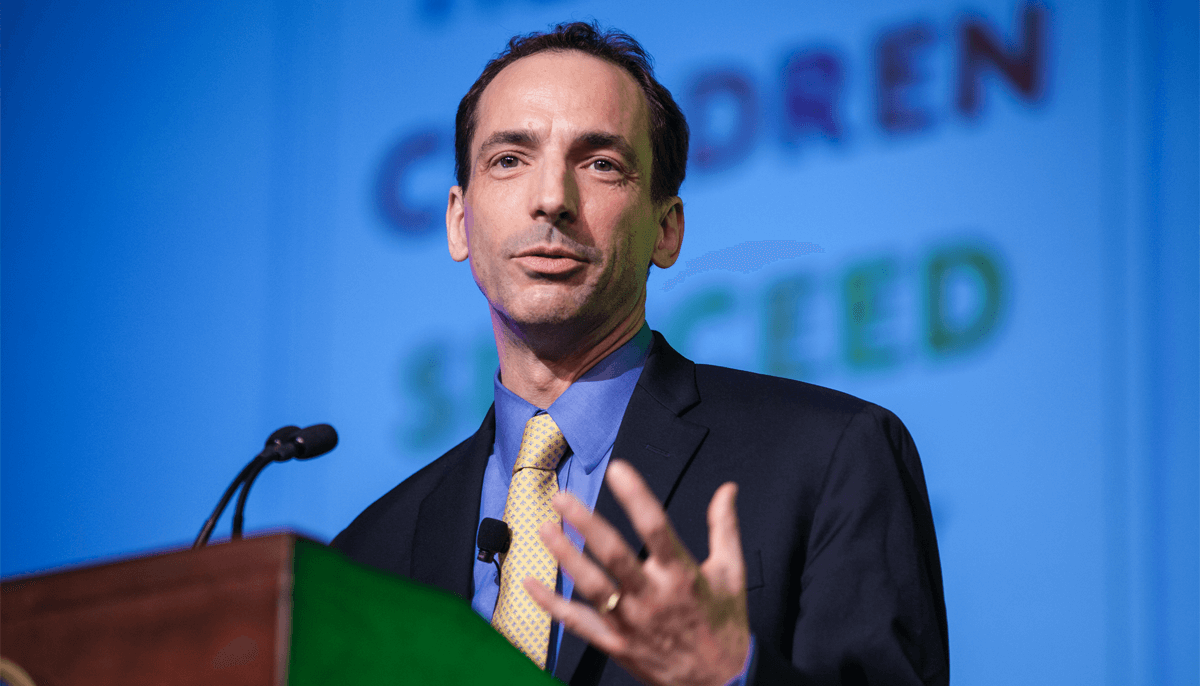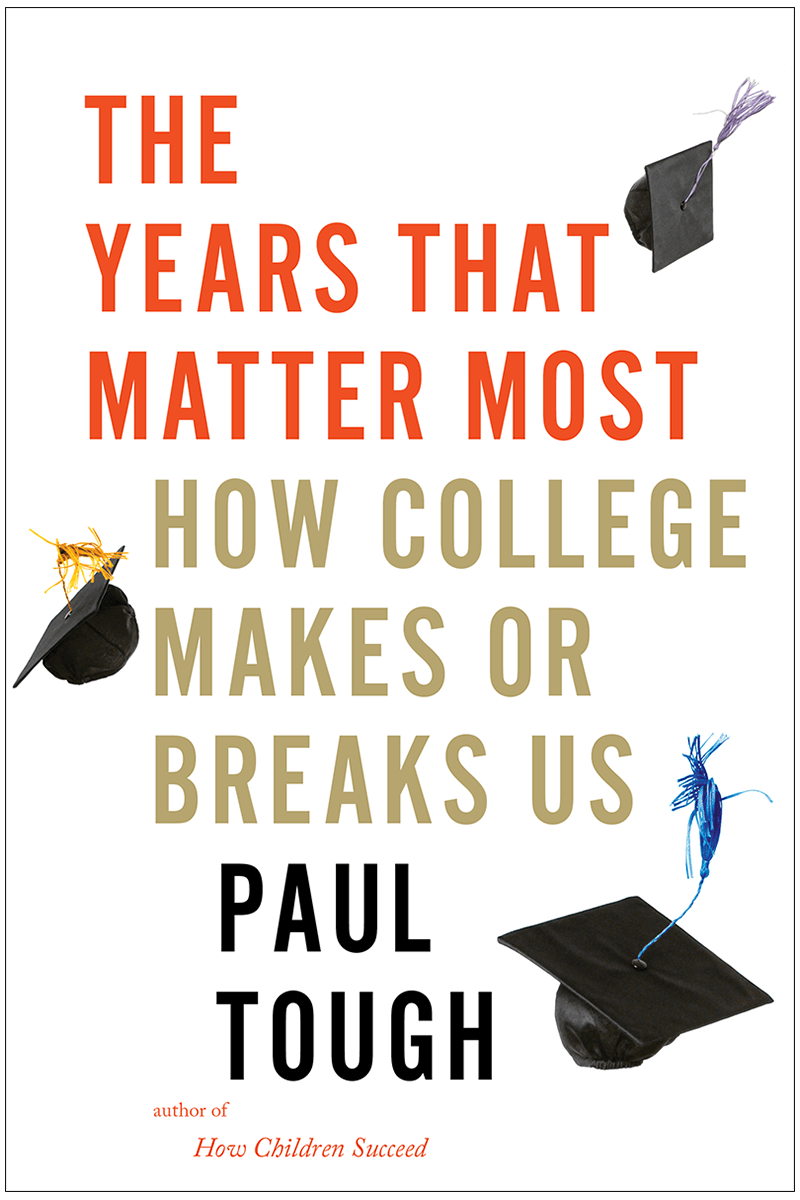
The Years That Matter Most: How College Makes or Breaks Us
by Paul Tough
Houghton Mifflin Harcourt, 2019, $28; 400 pages.
As reviewed by Matthew M. Chingos
College may not be for everyone, but most Americans go to college. In 2018, 67 percent of 25- to 34-year-olds had attended college at some point, up from 27 percent in 1968. Those who go to college—and especially those who complete a degree—consistently earn more than those who do not. The economic return to college has remained high, despite rising tuition prices.
But college is an increasingly risky proposition, as students take on more debt for an education that works out on average but not for everyone. Students who begin their studies at a four-year college have a 68 percent chance of earning a degree within six years. The corresponding rate for two-year colleges is 39 percent. College dropouts earn significantly less than graduates and are at much greater risk of defaulting on their loans.
What happens between the day when students first step foot on a college campus and the day they leave, with or without a degree? It depends—on the student, on the college, and on much that takes place before that first day. Paul Tough’s new book, The Years That Matter Most, takes readers on a whirlwind tour of American higher education, with a focus on the struggles, successes, and failures of low-income students striving for a better future.
Tough weaves the often-poignant personal stories of college students and educators with accessible discussions of data and research, giving readers views of both the forest and some of the trees. “College” is not one thing, an obvious fact at some level but one that is brought to life by Tough’s reporting at institutions ranging from Princeton (founded 1746) to PelotonU (founded 2012).
 But the book is not a random sampling of American higher education—selective colleges receive the most attention despite enrolling a relatively small share of students. Tough goes into great detail about the admissions process at elite private colleges, the role of the College Board and test prep, and how low-income students often struggle to fit in on highly exclusive college campuses. The selective flagship campus of Texas’s public university system is the subject of two of the book’s chapters.
But the book is not a random sampling of American higher education—selective colleges receive the most attention despite enrolling a relatively small share of students. Tough goes into great detail about the admissions process at elite private colleges, the role of the College Board and test prep, and how low-income students often struggle to fit in on highly exclusive college campuses. The selective flagship campus of Texas’s public university system is the subject of two of the book’s chapters.
Community colleges, open access four-year colleges, and for-profit colleges do all make an appearance. Tough tells the story of a welding student’s struggles at his local community college, and deftly debunks the myth of the welder who makes $150,000 a year that has been popularized (sometimes to denigrate the four-year degree) by lawmakers such as former House Speaker Paul Ryan and U.S. Senator Marco Rubio of Florida. Readers also learn about Arrupe College, a relatively new two-year degree program in Chicago that admits students with significant financial and academic needs—and serves them well.
But these kinds of colleges, where most low-income students enroll, collectively receive about as much attention as the SAT tutor whom the wealthiest families in Washington, D.C., hire for $400 an hour. Elite private and public flagship institutions often produce great outcomes for the low-income students they do enroll, but that’s a bit like saying that the lottery is a great social program for those who win it.
The author gives significant attention to the underrepresentation of low-income students at elite colleges. He describes a system in which wealthy families pass privilege from one generation to the next by buying higher admissions-test scores for their children through expensive tutoring, thereby boosting their chances of being admitted to colleges filled with students like them, and where high-paying firms recruit new talent.
Tough reserves his most scathing criticism for the College Board, describing a pattern of “one grand, well-publicized attempt after another to make the SAT more equitable and more fair, ending either in quiet, unpublicized failure or in a noisy claim of success that fell apart under more careful scrutiny.” For example, free online SAT tutoring offered by the College Board in partnership with Khan Academy was disproportionately used by advantaged students, but the College Board released cherry-picked data that gave the opposite impression. (The ACT largely escapes criticism, despite playing essentially the same role as the SAT, perhaps because it keeps a lower profile.)
But the author also documents how transformative it can be when disadvantaged students are able to gain access to high-quality educational opportunities—whether through test-optional admissions that let in students with great promise but no money for SAT tutors; the GI Bill that sent a generation of young men to college; or campus programs that meet the needs of low-income students.
What Tough doesn’t tell readers is how we might create more of these opportunities for transformation and diminish the perpetuation of unearned privilege. The final paragraph of the book correctly notes that government alone cannot solve the problems of a decentralized higher education system. Instead, “pressure for change has to come from many directions at once,” from students, parents, educators, and citizens who just have to decide how to pull the “levers for change [that] are all around us.”
The book’s lack of a unifying argument or proposed set of solutions feels like a shortcoming, but surely reflects the reality that these are hard problems to solve. The College Board could decide to shut down the SAT program, but the ACT (or a new entrant) would likely replace it. And even if it didn’t, selective colleges rely on other factors, such as extracurriculars, that would likely continue to advantage affluent applicants. A college can decide to go test-optional, but research indicates that this does not lead, on average, to a more diverse student body (despite Tough’s examples of individual students for whom the SAT was not a good indication of their potential).
If there’s an answer in this book, it’s in the stories of the educators who designed new programs, redesigned courses, or took a chance on an applicant with a low SAT score. Many of these individuals came from challenging backgrounds themselves, such as the nerdy kid who grew up amidst poverty and violence, was given a shot at college despite a low SAT score, and eventually became a college administrator. He worked hard to increase the enrollment of low-income students and make them feel more welcome on campus, even in the face of the hard reality that the college did not have enough resources to admit significantly more needy students.
Fixing higher education by serving one student at a time, creating one program at a time (many of which fail), on one campus at a time is hard work and frustratingly slow. And the challenges faced by low-income students can make it feel like the “years that matter most” came long before college. But progress accumulates, and the people who benefit often pay it forward for the next generation. That sounds like privilege worth perpetuating.
Matthew M. Chingos is vice president for education data and policy at the Urban Institute.


